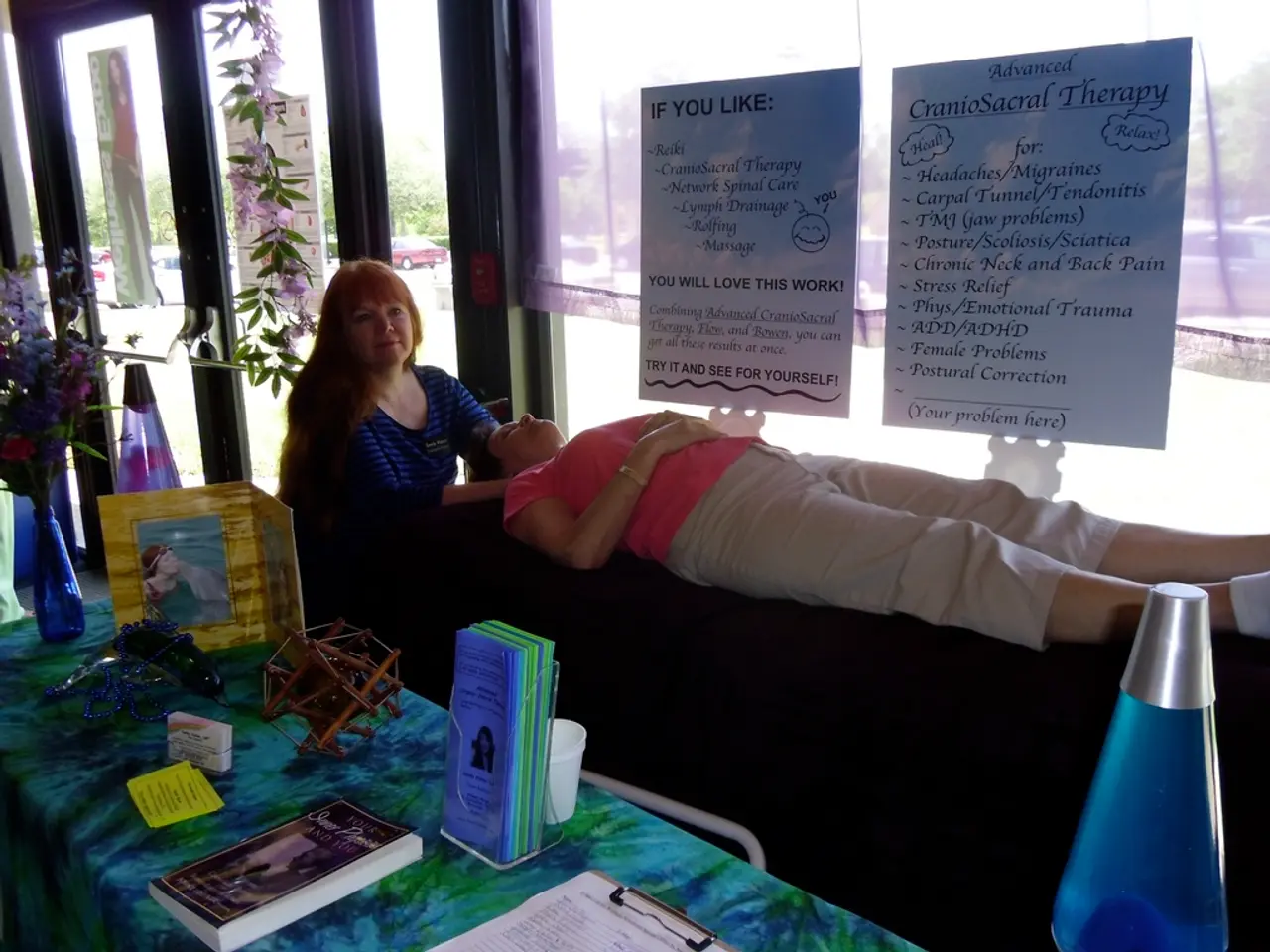Exploring Secure Bonding in Relationships: Still Important for Singles
In the realm of relationships, secure attachment is a beacon of confidence and stability. For singles seeking to foster healthier connections in the future, the focus lies on nurturing a robust, compassionate, and authentic relationship with oneself.
Recent insights highlight key principles that can help individuals cultivate secure attachment when they are single. These principles revolve around self-awareness, emotional regulation, and building a healthy relationship with oneself.
First and foremost, increasing self-awareness is vital. Understanding one's own attachment patterns, emotional triggers, and relational needs is crucial. This self-knowledge allows individuals to recognise when they're reacting out of past insecurity or anxiety rather than the present moment.
Balancing independence with intimacy is another crucial aspect. Cultivating a secure attachment means learning to value your independence while being open to connection. When single, this involves fostering a stable and authentic sense of self that does not rely on others for validation or safety.
Practicing radical honesty is also essential. Being truthful with oneself about feelings, desires, and the realities of relationships or potential relationships is key. This honesty includes acknowledging one's willingness to do the inner work necessary to grow emotionally secure.
Developing better communication skills is another important step. Before trying to connect with others, learning to sit with your own emotions and communicate your needs clearly and consistently is crucial. This also means understanding your inner child's voice and its impact on your relationship behaviours.
Setting and understanding real boundaries is essential for maintaining safety and respect in relationships. Boundaries are about managing what you can control and how you protect yourself emotionally, not about controlling others.
Taking full personal responsibility is another cornerstone of secure attachment. This responsibility builds self-trust and emotional resilience, as it means managing one's emotions and attachment style without expecting others to fix or chase you.
Using self-compassion is also vital. Recognise that attachment patterns were formed as survival mechanisms and that changing them is a gradual process. Approach yourself with patience and understanding instead of harsh judgment.
Engaging in reflective practices such as journaling, gratitude exercises, or other self-reflective habits can improve emotional clarity and help identify healthy versus unhealthy patterns before and during relationships.
Building emotional regulation is another key aspect. Work on your ability to stay present with difficult emotions without avoidance or overwhelm. This builds your capacity to connect deeply with yourself and others.
In essence, when single, cultivating secure attachment is about nurturing a stable, compassionate, and authentic relationship with yourself that lays the groundwork for healthy partnerships in the future. This approach encourages healing past wounds, strengthening self-trust, and developing emotional tools before fully engaging with others. This foundation helps create relationships based on trust, mutual respect, and genuine connection.
The Healing Attachment Wounds with Mindfulness and Creative Arts Interventions course offers a structured roadmap to shift from anxious or avoidant tendencies into true relational security. Shifting from a performance mindset to a sense of worth that is independent of external validation is crucial for secure attachment.
Secure singles are more capable of setting and maintaining boundaries, whether they desire partnership or embrace singlehood. The ability to cultivate inner security will transform how one experiences love, connection, and self-trust.
Understanding secure attachment as a single person is about deepening the relationship with oneself, with true security coming from knowing that one is already whole, worthy, and capable of creating meaningful connections. Secure attachment styles can evolve with intentional work, and secure attachment is a way of connecting with others, based on early relational experiences.
Secure singles approach communication with curiosity and openness. Co-regulation, or leaning on healthy connections for support, such as calling a friend when feeling anxious instead of spiraling alone, is also beneficial.
There are four primary attachment styles: Secure, Anxious, Avoidant, and Disorganized. Recognising these styles can help individuals understand their own attachment patterns and work towards a more secure attachment style.
- In singlehood, increasing self-awareness is crucial, as it enables one to understand their own attachment patterns, emotional triggers, and relational needs.
- Balancing independence with intimacy is vital in cultivating secure attachment, which involves fostering a stable and authentic sense of self that does not rely on others for validation or safety.
- Practicing radical honesty is essential for individuals who are single, requiring truthfulness with oneself about feelings, desires, and the realities of relationships or potential relationships.
- Developing better communication skills is a significant step for individuals seeking secure attachment, necessitating the ability to communicate needs clearly and consistently.
- Setting and understanding real boundaries is essential for maintaining safety and respect in relationships, with boundaries being about managing what one can control and how one protects oneself emotionally.
- Taking full personal responsibility is another cornerstone of secure attachment, building self-trust and emotional resilience in managing one's emotions and attachment style.
- Using self-compassion is vital, recognizing that attachment patterns were formed as survival mechanisms and that changing them is a gradual process.
- Engaging in reflective practices such as journaling, gratitude exercises, or other self-reflective habits can improve emotional clarity and help identify healthy versus unhealthy patterns.
- Building emotional regulation is another key aspect, requiring the ability to stay present with difficult emotions without avoidance or overwhelm.
- The course Healing Attachment Wounds with Mindfulness and Creative Arts Interventions offers a structured roadmap to shift from anxious or avoidant tendencies into true relational security, emphasizing the importance of shifting from a performance mindset to a sense of worth independent of external validation for secure attachment.




